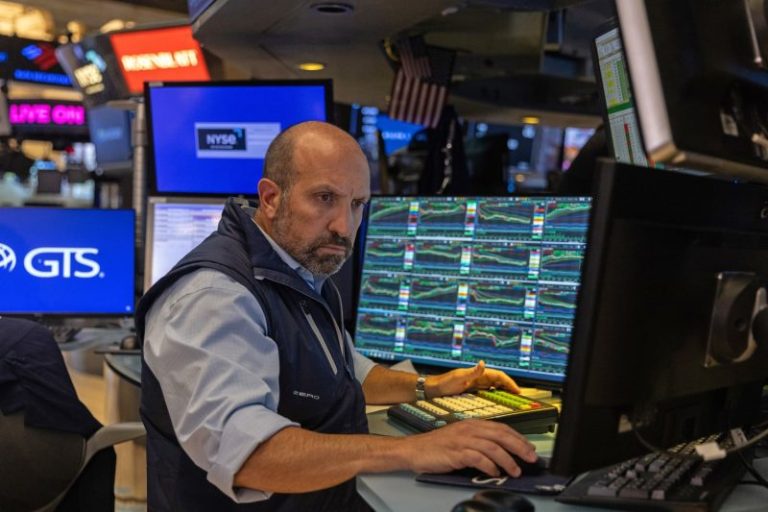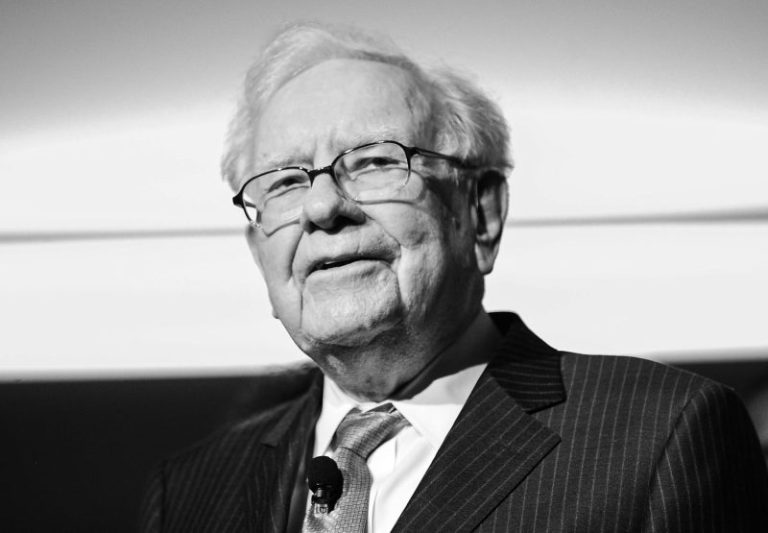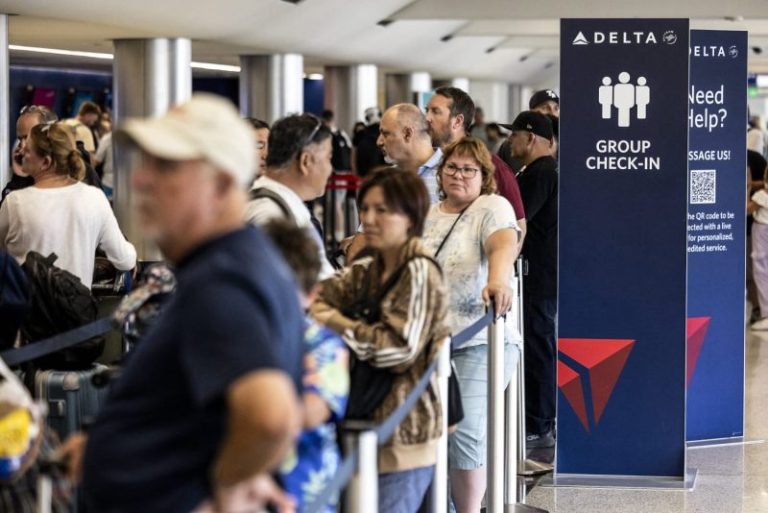Stocks tumbled for the second-straight day Friday as a weaker-than-expected jobs report and a dismal forecast from Amazon added to investor fears of a more substantial slowdown for the U.S. economy.
The Dow Jones Industrial Average closed down 611 points, or 1.5%. The S&P 500 dropped 1.8%, while the Nasdaq Composite lost 2.4%.
Early Friday, the Bureau of Labor Statistics reported that the U.S. added just 114,000 jobs in July — well below the 185,000 expected and down significantly from 206,000 in June.
Meanwhile, the unemployment rate climbed to 4.3%, from 4.1% — its fourth-straight monthly increase and its highest level since October 2021.
The market was already primed for losses as it opened following a negative quarterly earnings report from Amazon late Thursday. The e-commerce giant said customers were ‘continuing to be cautious in their spending’ amid a thinner financial cushion and the continued impact of higher prices.
The bad data kept rolling in as Friday wore on: The Commerce Department’s Census Bureau reported factory orders fell 3.3% in June, the biggest decline since April 2020 at the outset of the pandemic.
Friday’s sell-off pushed the Nasdaq index, which represents tech stocks, into correction territory, meaning it is now down more than 10% from an all-time high, set just a month ago.
Leading Friday’s pullback in stocks was Intel, which cratered 26% after announcing weak guidance and layoffs. Other big names seeing large declines included Prudential financial group, down 10% Booking.com, down 9%. Amazon also fell 9%.
In response to the ugly economic news, traders bought up U.S. Treasuries, which are seen as a safe-haven asset. That pushed the yield on the 10-year note down to about 3.79%, its lowest level since December 2023.
While the lower yield reflects economic distress, it was somewhat of a boon for homebuyers as mortgage rates, which track the 10-year yield, fell to 6.4%, their lowest level in more than a year.
Friday represented the market’s second-consecutive day of major declines. A day earlier, stocks saw heavy losses as they responded to other weaker-than-expected data, including a disappointing manufacturing output report and surprisingly high initial jobless claims.
Following Friday’s jobs report, many traders penciled in a 0.5% cut to the Federal Reserve’s key federal funds rate for the Fed’s next meeting in September.
The Fed usually acts in 0.25% increments — so by making a 0.5% cut, a growing chorus on Wall Street is betting that the Fed will be playing catch up by the time its Federal Open Market Committee (FOMC), which sets interest rates, meets again.
Earlier in the week, the FOMC announced it was keeping the fed funds rate at its current level of about 5.5% in order to continue to put pressure on inflation.
Claudia Sahm, a former Fed economist and the namesake of an economic rule that has predicted past recessions and which is now close to being triggered, said that while the new data are alarming, a true downturn is not yet inevitable.
“We are not in a recession now — contrary [to] the historical signal from the Sahm rule — but the momentum is in that direction,” Claudia Sahm, chief economist at New Century Advisors, said via email. “A recession is not inevitable and there is substantial scope to reduce interest rates.
This post appeared first on NBC NEWS










